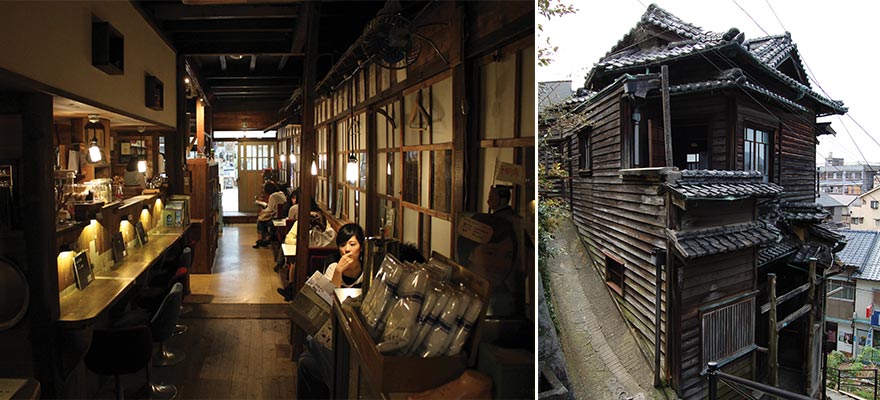Home > Highlighting JAPAN >Highlighting Japan June 2014>Revitalizing Japan's Regions
Highlighting JAPAN
Revitalizing Japan's Regions
Filling Old Homes with New Life
Onomichi City

Hiroshima Prefecture's Onomichi City is well known to Japanese as the home of famous writers and as a setting for various movies and dramas. Narrow footpaths meander between the houses and old temples scattered over the leafy hillside above the town's Seto Inland Sea waterfront. Yet despite its many charms, Onomichi—like many regions outside of Japan's large metropolitan areas—bears the signs of lower birth rates and a graying society: approximately five hundred houses there are abandoned and falling prey to the effects of nature.
Onomichi local Masako Toyota, a former tour conductor for eight years with over a hundred trips abroad, remembered being impressed by the well-preserved old towns and buildings of Europe. After leaving her job and returning home around the start of the millennium, she wanted to do something to help revive the town. She wondered in particular about how to save Onomichi's abandoned houses—or akiya as they are known in Japanese.Toyota began searching for akiya to renovate—a tedious task that involved scouring neighborhoods, checking neighborhood maps for places with no known resident, and inquiring with neighbors as to occupants and landlords—all while being a mother to young twins. "It took six years to find my first house," Toyota says, referring to an unusual wooden structure clinging to a steep hillside near Onomichi Station that she later named Gaudi House. She began restoring the place with the help of her carpenter husband in 2007.
Media attention and Toyota's own blog about the restoration led to inquiries from people all over Japan interested in Onomichi's akiya. She soon launched the NPO Onomichi Akiya Saisei* Project, which aims to use renovated akiya to promote community, architecture, the environment, tourism and art. Toyota's NPO also collaborated with the Onomichi City government to create a matching service known as an "akiya bank."
"I thought if we could provide a matching service, more akiya could be saved," she recalls.
Her NPO now supports sixteen different houses, with renovation work ongoing at many. Venturing into an akiya is like entering a time capsule. Toyota recounts opening a refrigerator and "finding eggs that were twenty years old," as well as the "mummified remains of a mouse, and three consecutive years of daily newspapers." There have also been welcome discoveries, however, such as antique furniture and elegant glassware, which the NPO resells or recycles whenever possible. The efforts of Toyota and the over 160 people that have worked with her organization have transformed derelict old buildings into shops, cafés, and even art galleries and spaces used by the Onomichi Artist in Residence program.
Toyota also opened a budget guesthouse called Anago no Nedoko, loosely translated as "Where the Eel Sleeps." The guesthouse has been gaining popularity with Japanese and foreigners alike since it opened in 2012, and Toyota notes that those who stay once often come back. One such visitor, a musician from Switzerland, liked it so much that he returned for two weeks to hold a live concert at the facility.
Toyota knows firsthand about the problem of young people leaving the countryside to go to big cities, reducing the population and energy levels in these regions, which is a trend affecting not only Japan but countries all over the world. While that may not change anytime soon, Toyota believes that bringing visitors to Onomichi can play a vital role in preserving its character. "Travelers' positive comments help people here take pride in Onomichi."
© 2009 Cabinet Office, Government of Japan






